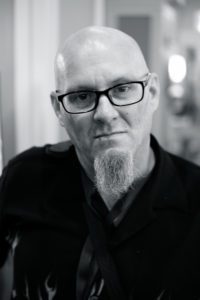

Op-Ed
by Thomas L. Knapp, Director, The William Lloyd Garrison Center for Libertarian Advocacy Journalism
Near the end of July, Andrew Yang — whose previous political projects include an unsuccessful run for the 2020 Democratic presidential nomination, an unsuccessful run for the 2021 Democratic mayoral nomination in New York City, and what initially looked likely to be an unsuccessful new “third party,” the Forward Party — announced a re-launch of that last effort.
While it’s still called the Forward Party, Yang’s vehicle is merging with two other (also previously unsuccessful) “third party” efforts, the “Renew America Movement” (co-founded by Christine Todd Whitman, former Republican governor of New Jersey, who will co-chair “new” Forward) and the “Serve America Movement” (chaired by former Republican congressman David Jolly of Florida).
The merger, Yang tweeted, creates “the biggest 3rd party by resources in the United States.”
He may be right about that: The Libertarian Party, which previously held claim to the title of “third largest political party in America,” seems to be circling the drain after after a four-year internecine fight culminating in a Memorial Day weekend “takeover” by a Republican astroturf operation, the “Mises Caucus” (disclosure: I’ve been a partisan Libertarian since 1996, but have re-registered in my state as “no party affiliation” and cut off my meager financial support for the national organization pending a hopeful libertarian re-“takeover” of the party).
But are the “resources” Yang speaks of enough for the Forward Party to realize its vision?
In a July 27 Washington Post op-ed, Whitman, Jolly, and Yang tick the usual “moderate” boxes. They’re against “polarization.” They believe most Americans “want to move past divisiveness and reject extremism.” They want (and are trying to create) a party that “reflects the moderate, common-sense majority.”
And therein lie two problems.
First, while most Americans seem to agree that “polarization” sucks, most Americans are also, well, polarized. They may think of themselves as “centrists” or “moderates,” but so do their neighbors, who all have very different ideas about where the “center” really is.
Second, to the extent that a “center” exists, it’s already well-covered by a Venn diagram of Republican and Democratic policies and constituencies.
As the late L. Neil Smith once wrote, “great men don’t ‘move to the center’ — great men move the center.” Within the context of electoral politics, the same is true of any party that hopes to actually create systemic change. The Overton Window (the spectrum of the politically “acceptable”), like most windows, has its handle on the edge, not in the center. Change comes from the edge and its ability to change the minds AT the “center.”
The news may not be all bad for the Forward Party’s prospects, though. While its rhetoric is “centrist,” its stated priorities focus on individual freedom and its specific policy proposals — Ranked-Choice Voting, Nonpartisan Primaries, and Independent Redistricting Commissions — are at, not beyond, the edge of the aforementioned Overton Window: Good ideas that most people like but that the “major” parties refuse to touch.
Will they excite voters enough to move the needle? Time will tell. But time may be running out on American democracy.
The views and opinions expressed in this commentary are those of the author and do not reflect the official position of Citizens Journal
TELL YOUR FRIENDS ABOUT CITIZENS JOURNAL Help keep us publishing –PLEASE DONATE



